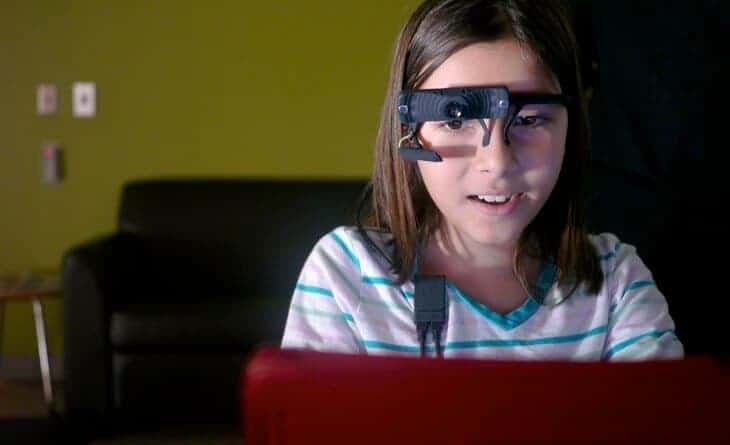Every child experiences anxiety and fear at one time or another, but some children seem to experience fear more frequently than others. As part of a new project being funded by the National Institutes of Health, Penn State researchers are looking into emerging evidence of a link between fearfulness and anxiety, or lingering apprehension, in young children.
Koraly Pérez-Edgar, associate professor of psychology and principal investigator on the project, and her research team will conduct studies on children ages five to six using cutting-edge mobile eye-tracking technology.
The project is a continuation of previous research funded by Penn State’s Center for Online Innovation in Learning (COIL). Results from past research indicated early fearfulness, when accompanied with an elevated attention to threat, can lead to subsequent social withdrawal or anxiety symptoms as the child grows.
“The initial COIL-funded study showed that we can capture children’s attention as they navigate their environments,” said Pérez-Edgar, who also runs the University’s Cognition, Affect, and Temperament Lab. “For our new study, we’ll be testing a larger sample utilizing a more advanced mobile eye-tracking system to capture eye-gaze information.”
The research team will measure attention bias to threat, which causes people to focus on the thing they are fearful of while simultaneously ignoring other details. “It is a reliable risk factor for anxiety, particularly social anxiety,” Pérez-Edgar explained. “We know that anxiety is a developmental disorder that typically emerges in early childhood, and is less amenable to intervention with age. The hope is the earlier we can predict, recognize and diagnose anxiety in children, the earlier we can assist parents, teachers and doctors help them to overcome it.”
The mobile eye-tracking system, which resembles a visor with a camera attached, records eye tracking information, such as where the person is looking and for how long, via an infrared light and optical sensors. The researchers, including graduate student Xiaoxue Fu and research technologist Phillip Galinsky, both in the department of psychology, worked with German technology firm Pupil Labs to develop and modify the visor before it was created via a 3D printer.
The eye-tracker is connected to a wireless tablet computer worn in a backpack by the child, which sends eye-tracking information to a computer so researchers can view live video footage of what the child is seeing. A red dot indicates the exact point of the child’s gaze, so researchers can see what the child is fixated on and for how long.
The eye-tracking system will be used during episodes designed to elicit fearful behavior in social and non-social settings. The project will focus on kindergarten-aged children, because this is the age window that typically experiences the onset of anxiety disorders, and where social withdrawal is more apparent for fearful children.
“The children will come into the lab for two short visits, once alone and once with an unfamiliar peer,” said Pérez-Edgar. “We will use episodes from the Laboratory Temperament Assessment Battery, a well-established, standardized protocol tailored for assessing fearful temperament in preschool children.”
According to Pérez-Edgar, the mobile eye-tracking technology has broad implications, as it may be adaptable to other socioemotional impairments such autism and used for real-time monitoring of social interaction in intervention settings. “We are pushing for transparency and keeping our research data accessible. We believe our work has the potential to impact a broad range of research across disciplines and is part of the process in keeping science moving forward.”
Pérez-Edgar is one of 37 co-funded faculty members at Penn State’s Social Science Research Institute.



Nice work! This can be a very useful thing these days. More and more children are being affected by anxiety for so many reasons at this age.